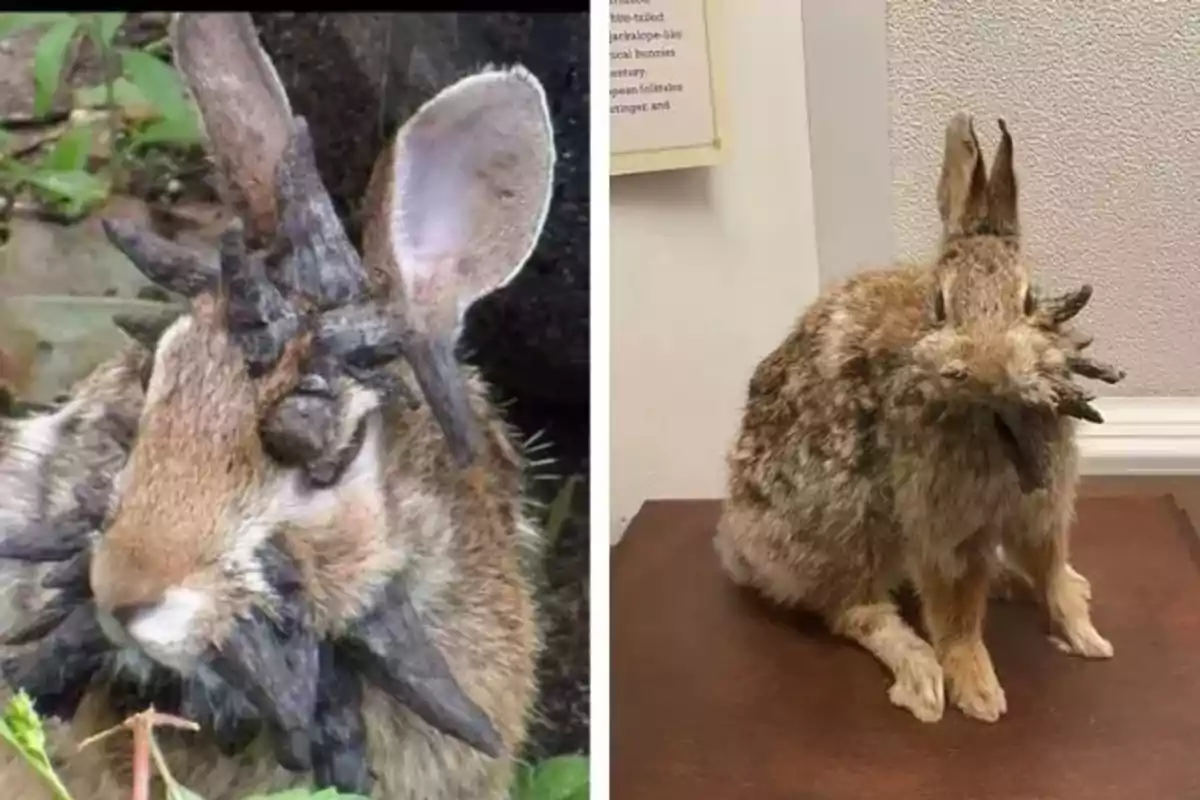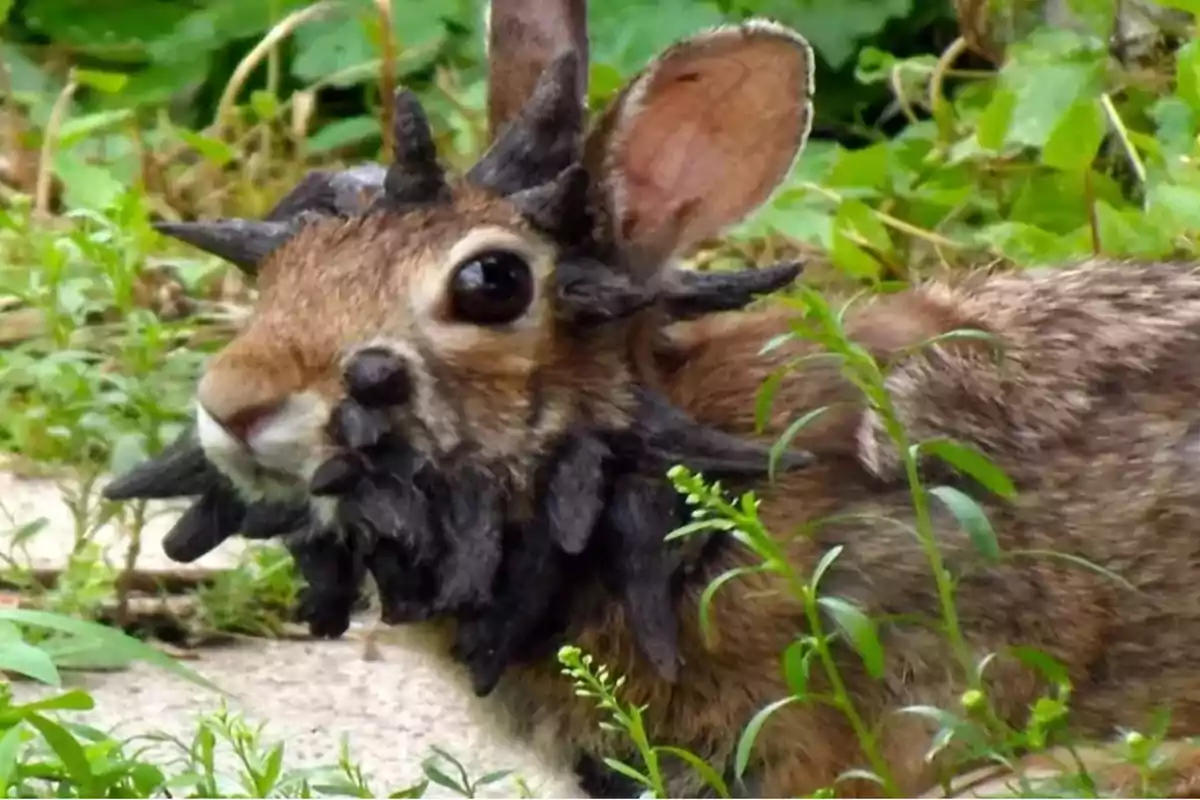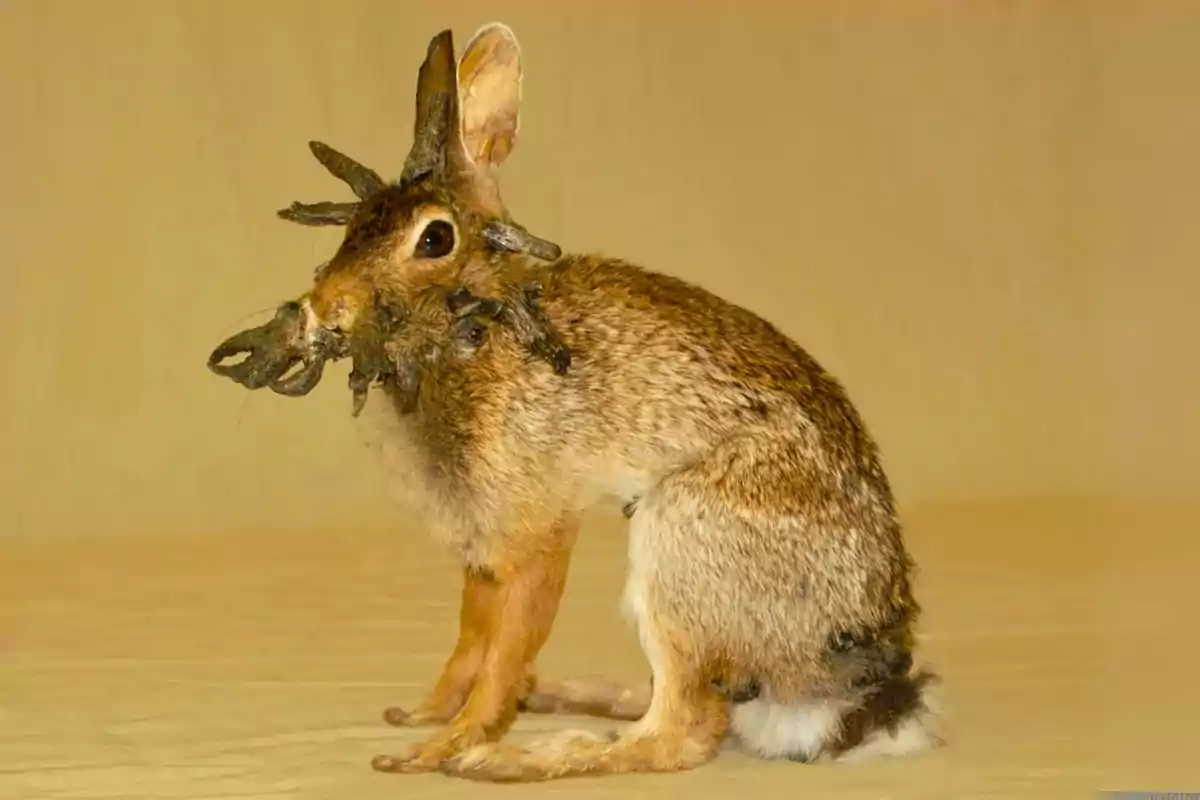
Concern is growing in the United States over the appearance of rabbits with tentacles.
A large number of residents alerted local authorities about the sighting of mutated species
The community of Fort Collins, in the state of Colorado, is on alert after the appearance of wild rabbits with strange black growths in the shape of "tentacles" protruding from their heads and faces.
Images and testimonies have multiplied on social media and local news outlets, until wildlife authorities confirmed that this is a viral infection that affects only this species.
The first reports came from the southeast of the city, where residents began photographing and recording the unusually looking animals.

"They looked like black spikes or black toothpicks sticking out around its mouth. I thought it would die during the winter, but it didn't. It came back a second year and the growths increased in size," resident Susan Mansfield, who closely followed one of these rabbits for two seasons, told NBC.
The cause behind the strange appearance
According to Colorado Parks and Wildlife (CPW), the condition is caused by the cottontail rabbit papillomavirus, a disease that produces wart-like growths on the faces and heads of infected animals.
These growths can take on elongated, twisted, and dark shapes, which in some cases give them an appearance similar to horns or tentacles.
Kara Van Hoose, CPW spokesperson, explained that infection occurs mainly in the warmer months, when fleas, ticks, and other insects act as vectors. It can also be transmitted through direct contact between rabbits, although this route is less common.

Does the virus affect humans?
Authorities clarified that the virus doesn't pose a risk to people, dogs, or other species. In addition, it usually doesn't cause pain to the animals, unless the growths interfere with vision or feeding. "The biggest problem occurs when the nodules grow near the eyes or mouth, as they can make it difficult for the rabbit to see or eat normally," Van Hoose explained.
CPW warned, however, that any contact with infected rabbits should be avoided, reminding that handling wildlife can pose indirect risks and that observation should be done from a distance.
More posts: